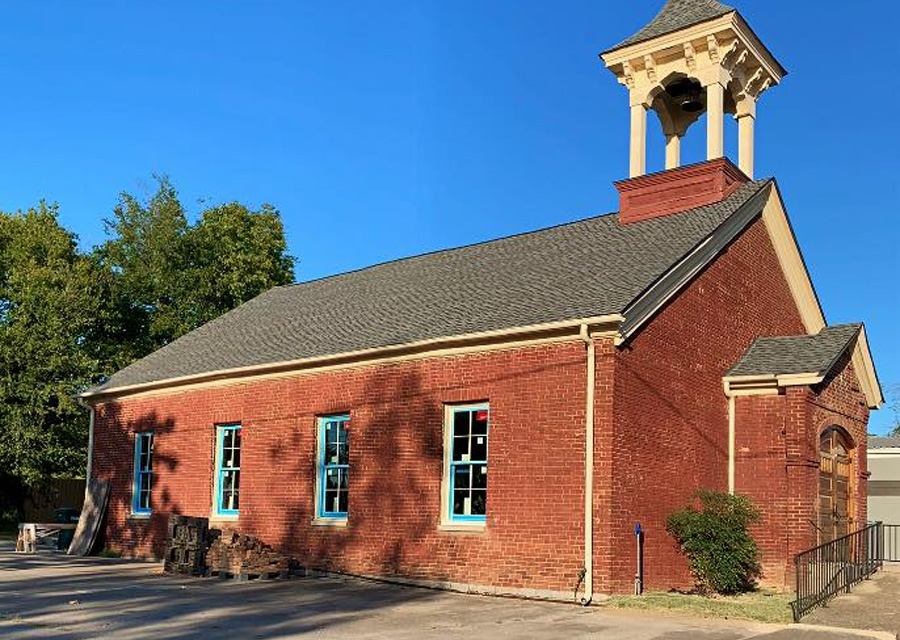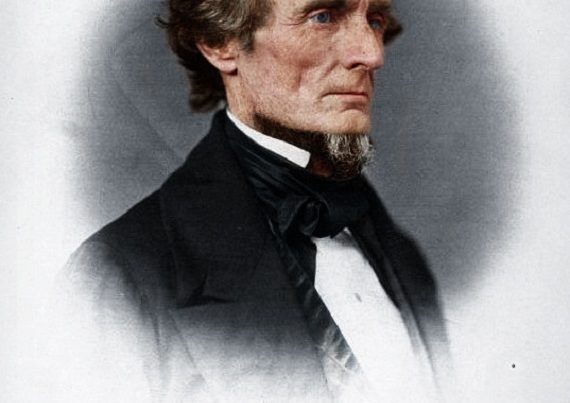It is often said that “a watched pot doesn’t boil”. Today I’d like to alter that saying to “A watched pot doesn’t boil over.”And I’d like to add that “A watched pressure cooker doesn’t blow up.”
The idea here is to prevent a situation from getting out of hand and making a mess in the environment. This article is to commemorate a second great awakening in Wilson County, Tennessee through the commitment of its citizens to rescue and restore the Pickett Chapel Church.
The Old Methodist Church, later renamed, Pickett Chapel began as the place of worship for the first Methodist converts, in Lebanon, Tennessee, which was founded in 1812. In 1827, this congregation raised funds to construct a permanent chapel on Market Street. It was the first and the oldest brick building in the city of Lebanon, constructed of hand pressed bricks made by slaves from the local community. The first converts were free whites, free blacks and slaves of the Wilson county community. Enslaved African Americans and free African Americans played a vital role in the construction and growth of this congregation and church.
The establishment of this Methodist movement in Wilson County occurred at a dynamic time when our newly formed nation, the United States of America was still under the influence of the religious phenomena, known as “The Great Awakening” (1720-1740). It was a crucial time because our young nation was caught up in the struggle of determining what “freedom” meant in a nation just approaching 36 years of freedom from England. It was a time when religious groups began to take on the issues of “slavery” in the young nation of The United States of America.
Quakers took the lead, in the push for abolition; by the 1780s all Quakers were barred from owning slaves. There was a small active Quaker community in Wilson County when the Methodist organized in 1812. Some of my ancestors here in Wilson County were a part of that community. My third great grandmother, Elizabeth “Betsy” Hackney b. about 1824 in Tennessee was a resident of this community. She grew up in the Quaker household of her mother and father. She is listed as a free woman of color in the 1850 and 1860 censuses.
Elizabeth’s father, James Hackney (1783-1860), my fourth great grandfather and his wife Jane Boyd (1783-1860), my fourth great grandmother were a part of that Quaker community when the Methodist organized in 1812. They are both listed in the 1850 and 1860 censuses as free people of color. My family has always had close ties to the Methodist church. Because it was such a small Quaker community, it is not improbable that they may have converted to this newly developing Methodist community.
All of this was taking place when the Anglican Church began making great efforts to spread Christianity to the common people. Prior to this time the Anglican Church and Catholic Church had spearheaded its focus on the needs of the “rich and famous.” One did not just show up on a Sunday morning and join a church. One had to prove that you were favored by God’s grace and that grace was reflected by one’s land holdings and material wealth, thereby allowing one to make substantial donations to God’s causes.
This is an important era of history that is very well covered in the book, The World They Made Together, by Mechal Sobel, 1987, Princeton University Press.
“The established church was run by the elite (through the institution of the vestry) and by the elite. Church attendance was in great part a social affair, with business conducted prior to the formal proceedings, and “social-lunching” together an important postchurch activity. All these activities for the upper class were ritualized; the lower classes, although welcome to sit in the back or in the balcony of the church, were marginal to its life. Even Devereux Jarratt, who was fairly well off, maintained that he felt he was one of the “simple folk”…. Although baptized, Jarratt certainly would not have gone to a minister for spiritual advice or counseling. Many poor whites never went to church, were not married by ministers, and were not baptized. And although a growing number of blacks born in Virginia were baptized, most of the slaves were not baptized either.” P. 178.
Some early Baptist were also influenced by the Great Awakening.
“The Baptist church , of the 1750s, 1760sn and 1770s, had been a church of the dispossessed, Black slaves and poor whites had suffered for their faith, blacks had been whipped and whites jailed and hounded out of Virginia. They had prided themselves on being a church of the lowly and persecuted. However, by the late 1780s many white Baptists had moved up in social class, and many of the “middling sort” now joined them, along with a few from the elite. The new Baptist church began to be self-conscious about its relationship with blacks and its attitudes toward slavery.” P.207
At some point, the renegades of the Protestant Movement, recognized that “the pearl is in the fish’s mouth”. Imagine the gall of them, they decided to take a verse in the bible literally. Matthew 4:19 KJV “And he saith unto them, Follow me, and I will make you fishers of men.” So small groups of Anglicans (Baptist and Methodist) began to open their doors to all and initially joined the Quakers in the condemnation of slavery. The quote below will introduce you to some of the history that you may be missing. This book is a great read and will leave you with much to think about.
In 1785 and again in 1789, the Baptist General Committee had termed slavery “a violent deprivation of the rights of nature” and had suggested that the legislature could end this “horrid evil” in a “great Jubilee.” The Methodist had also openly condemned the institution. Methodist James O’Kelly, an itinerant preacher in Virginia in 1778, had been one of the majority condemning slavery at the Baltimore Conference of 1780, crying “Remember, that ‘of one blood God made all nations’, Africa not excepted.” The Conference decision was binding on Virginia. P. 209.
Those newly formed congregations in the south were open to free whites, indentured whites, free blacks, free people of color indentured blacks and slaves. I realize this may be news to some but it is true and it is worth our while to look back for a deeper understanding of those times. How blessed we are in Lebanon, Wilson County, Tennessee to have a building that was constructed during those dynamic years, still standing here as a beacon calling for us to preserve and protect the legacy of our ancestors.
That ringing in your ears is the elephant in the room trumpeting out the obvious question, “What happened to derail the momentum of this movement of “love, freedom, and justice for all?” What happened that it was not until after the Civil War that the end of slavery was seriously addressed? Those questions are important. Hopefully they will serve as part of the momentum and catalyst of the second “Great Awakening” in Lebanon, Tennessee, by acknowledging the importance of the restoration of Pickett Chapel Church.
We have a mission that goes beyond the restoration of a building. We are committed to the restoration of the mission of our ancestors when they first met in 1812 and took on the construction of this building in 1827. We want to restore and revitalize their love of our community and the goals of freedom and justice for all. We want to honor them for their bravery and attempts to make a better life for all. We pledge to be the new watchers of pots and pressure cookers and not to allow this noble mission to be derailed. Feel free to become a part of our mission; visit Pickett Chapel and become a part of our pledge.







grandmother would actively get me away from my folks for a week, late 70s early 80s…john 14:6 is the only thing i went home with.
Dear Ms. Marthal,
I have a question about some wording you have in the article. You say something about the Anglicans in Wilson County when I think you mean something else, maybe people descended the British:
“All of this was taking place when the Anglican Church began making great efforts to spread Christianity to the common people. Prior to this time the Anglican Church and Catholic Church had spearheaded its focus on the needs of the “rich and famous.” One did not just show up on a Sunday morning and join a church. One had to prove that you were favored by God’s grace and that grace was reflected by one’s land holdings and material wealth, thereby allowing one to make substantial donations to God’s causes.”
I’m the Priest in Charge of the Episcopal Church in Lebanon, Tennessee, at 1500 Hickory Ridge Rd. We are the only representative members of the Anglican Communion (Church of England) in Wilson County, Tennessee and didn’t appear in Wilson County till 1928, per our diocesan records.
Around that time students at Castle Heights and staff and faculty at the now Cumberland University sought to have Episcopal services in Lebanon and met at the Smith Funeral Home across from Castle Heights Military Academy. St. Paul’s Episcopal Church in Murfreesboro sent a clergyman to provide the requested church services. Church of the Epiphany was established as a mission church by the diocese in the early 1930s.
Since there were no Anglican groups until 1928, they couldn’t have committed the sins listed above in the early to mid 1800s.
See also The History of Wilson County, Tennessee edited Frank Burns, second edition, 1987, page 133.
Maybe you meant people who descended from the British Isles that could include any number of Christian denominations? Cumberland Presbyterians seem to have had a large influence in our area as well.
Not that Episcopalians/ Anglicans are innocent of racism and classism in Tennessee! See Christ Cathedral’s website in Nashville and the University of the South in Sewanee, TN for detailed accounts.
You could be meaning the Methodist Episcopal Church which disconnected from Anglicans and Episcopalians with the American Revolution.
Anyway, here’s hoping that the good things that have been accomplished by Christians in Wilson County, of all races, outweigh the ugly things, through the grace of Jesus Christ. So happy to see Pickett Chapel is being restored!